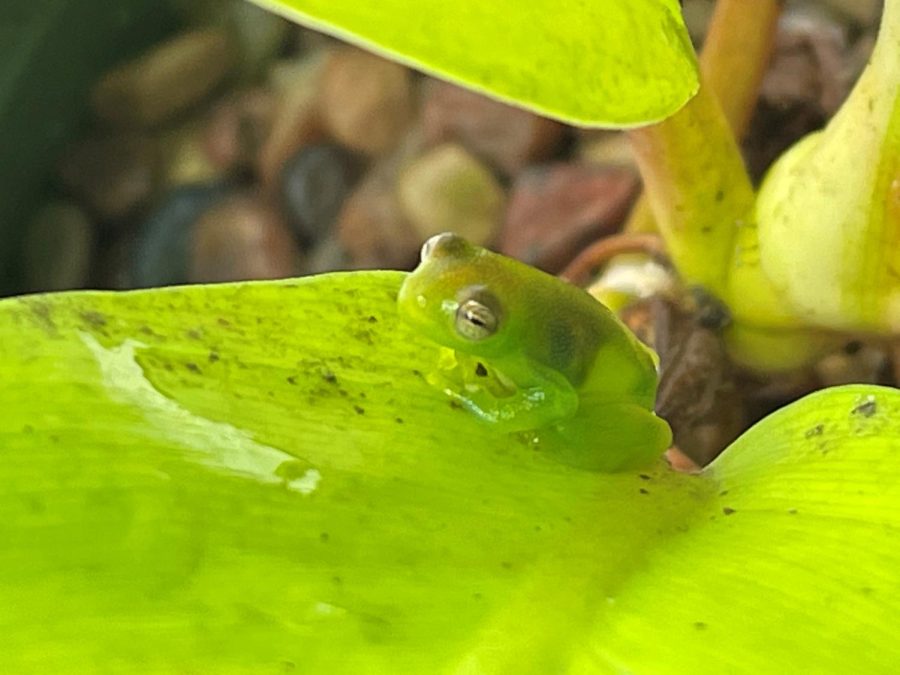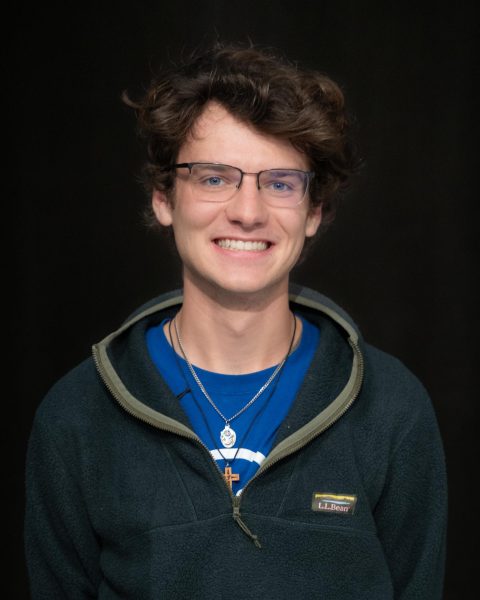Just north of Milwaukee, Rick “Rainforest” Boyd, adjunct instructor in the College of Arts & Sciences, is making leaps and bounds over his latest accomplishment in the frog breeder community.
Walking into his lab feels like venturing thousands of miles away from Wisconsin and into the rainforests of Central America. Boyd is greeted with the croaks and calls of multiple species of frogs.
Red-eyed tree frogs watch with their beating eyes on when feeding is next. White tree frogs are practically jumping out of their cages greeting him. And the poison dart frogs lounge with their brilliant colors, warning those to stay away. Fortunately for Boyd, the dart frogs are only poisonous because of the fire ants they eat in the wild, so he has no trouble handling them.
But the one that is catching the most attention is his efforts with the granulosa glass frog.
Boyd is only the second individual in the United States to successfully breed the granulosa glass frog, a frog with a translucent stomach found in the humid lowlands of Central Asia. This trait makes it possible to view the glass frog’s intestines from the outside looking in.
His feat was confirmed after his tadpoles had climbed out of the water with their newly developed legs, turning into froglets, the next step in the frog metamorphosis. Boyd’s achievement has some of the frog community jumping for joy.
“The exciting news in the community is that my work is helping to show that that technique is duplicatable by a hobbyist in terms of trying to get this to happen in captivity. Meanwhile, the hobbyists are excited because they end up with a pet frog and when I sell them to a pet store or community they get a frog that is used to being with humans,” Boyd said.
Boyd said that his discovery came after a period of trial and error. In the wild, female frogs wait until the rainy season to breed. In Costa Rica, where the frogs are most native, this is between the months of May and November. Creating this natural phenomenon in an artificial environment was a tricky step in Boyd’s endeavor.
“It turned out that granulosa glass frog females apparently do not even ovulate until the second month of the rainy season. So I’ve had to rotate these in and out, in and out every day for weeks at a time, but it worked,” Boyd said.
At first, his efforts were fruitless. Millie, Boyd’s only female, wasn’t showing any signs of ovulating and Boyd was stumped. Going out on a limb, he turned to the Facebook group where he received insights from fellow hobbyists on what he should try adjusting.
“There is a glass frog community, it’s a public group … and we compare notes back and forth. One of the other gentlemen who was successful with this a year ago in California said you need to experiment more with the rain chamber you are using,” Boyd said.
After tweaking his rain schedule and some patience, Millie’s stomach wasn’t just showing her heart it was also showing her eggs.
His work is all in an effort to save the frogs in their natural habitats, a concept he calls “conservation through commercialization.”
“Every one of these frogs that I’m growing in captivity and selling to other hobbyists or pet shops takes the pressure off the wild population, having people legally or illegally grab them and put them into the pet trade world wide worldwide,” Boyd said.
In addition to helping conserve the frog population, Boyd is also taking what he learns and applying it to his classroom teachings.
For instance, he is able to teach his classes about the nitrogen cycle while applying it to the frogs. When working with the granulosa tadpoles, he had to experiment with the water conditions and the quality of nitrates and nitrites in the water, which helps starve harmful bacteria in the glass frog tadpoles’ stomachs.
Simon Glarner, a sophomore in the College of Arts & Science, took Boyd’s Earth and Environmental Physics class.
“Pretty frequently he would give us updates on what was going on with the frogs, and he would show pictures of how they were doing… he’s ridiculously knowledgeable and really personable,” Glarner said.
The class is not just limited to environmental studies majors, it is open to all interested students.
“The students were all over the place, but it was definitely an interesting class,” Allie Plante, a sophomore in the College of Engineering said. “He is always trying his best to keep everyone engaged. There were some classes where he would just talk about his frogs. But it was a good mix of everything, we were still able to learn everything.”
At the moment Boyd’s granulosas have grown into froglets. At this stage, all they do is lay around and absorb their tail and develop frog traits such as lungs and front arms. All this requires very little supervision, so there isn’t much Boyd can do on this end.
In the meantime, Boyd plans on hopping onto his next project, growing a different species, the polka dot frog. A frog is known for its natural fluorescence, the first kind in the frog kingdom.
This story was written by Connor Baldwin. He can be reached at connor.baldwin@marquett.edu




